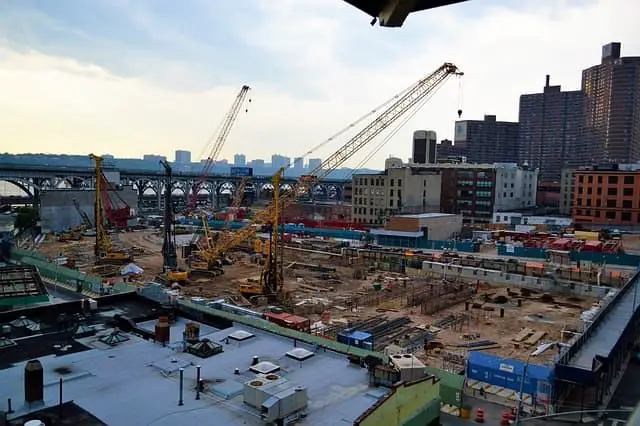Gentrification Definition
Gentrification is the rebuild of a specific deteriorated region or neighborhood into a more affluent and well-developed neighborhood. It has been controversial over the past few decades because not everyone agrees that gentrification has had a positive influence on people. For instance, there have been many economic displacements and social changes where the low and middle-class people have struggled to afford the costs of a gentrified neighborhood. Ruth Glass is the main theorist behind gentrification who attributed the concept to the changes that took place in London after the post-industrial era. Atlanta and Boston are good examples of places which have endured gentrification. There are many definitions of gentrification but the main idea is the dislocation of poor people as more wealthy residents occupy a city or place. Some cities and councils are anti-gentrification because of the dismissive social effects it has had on people with the influx of affluent residents.

Related: Jane Jacob’s vision for cities, Community Participation, Advocacy Planning Concept
Causes of Gentrification
There have been many causes for gentrification. One argument is the supply-side and demand-side factors that have been more favorable to the person that pays the most value for a property. This could be attributed to the decrease in inner-city housing and the growth of suburbs which was the case after the industrial era in England and America. However, as prices become more expensive in city centers as more people would like to live closer to their workplaces and offices which are mostly located in the central city or CBD area, people move outside of the city so that they can find cheaper places to live especially in the suburbs.
But as more people move out of the city, the shift takes place that in the places where wealthy people are likely to live, especially the specific neighborhoods, rent prices grow which makes the central city cost cheaper. When this happens, there is a play in economics where nearly all the neighborhoods both in central city and suburban cities become expensive and nearly the entire city becomes too desirable only for the wealthy and those who can afford to live there, such as the case with NYC and London, which are the most expensive central hubs of urban living today. This is the main cause of gentrification and it is closely tied to monetary value, capitalism, and economics of a city.
However, as an article states, “demographic and market forces cannot entirely explain gentrification. Government policies that cause housing values to fall in pockets of a city or policies that create incentives (financial or otherwise) for high-income people to purchase homes in lower-income neighborhoods also play a role.” For this reason, local government policies and values for the growth of their cities are also important, for instance, if a government decides to build more affordable homes for people then many people other than just the wealthy will benefit in living in those cities.
Examples of Gentrified Places
Recently, Bohemian culture is associated with Gentrification, as more and more residents where gentrification takes place are surrounded with street art and wall art, to gain more attention to the gentrified culture. This also brings about a sense of place in the city and the specific neighborhood. Some examples of gentrified cities are as follows:
1) San Fransisco, USA – This American city makes many headlines for it’s gentrified culture and change. Because of the growth in IT as the IT city in the world with Google as it’s largest head office, it is increasingly becoming a place only for engineers and IT professionals. People in other sectors are undervalued because of concepts such as Google free buses which are only offered to Google employees. Such changes in profession and growth in technology cause displacement and hardship among the poorer people in the city. However, the government seems to be taking measures to combat this problem but creating more employment for people outside of the IT industry.
2) Mexico City, Mexico – As artists and wealthy stores and labels occupy Mexico City, it is becoming more and more expensive for locals to live in the CBD area. However, neighborhoods such as La Roma, are becoming more accessible and are giving a fight against gentrification with localized markets and so forth. There is also an increase in street art in Mexico on the walls to convey a variety of messages to the local and international population conveying political messages to general aestheticisation of walls and city places. This has also recently gained pace in gentrified neighborhoods.
3) Lisbon, Portugal – Lisbon has become one of the most multicultural places to live in the world as it attracts more wealthy residents because of its international culture and laid-back attitude. There has also been a lot of construction happening in the city as more immigrants move in to enjoy the lifestyle. This also makes it a gentrified city, causing hardship among the middle-class population as it favors the upper middle class and affluent citizens.
Related: Collaborative Planning Theory, Rational Planning Model
Conclusion
This article has provided the definition, causes, and examples of gentrification which is a fairly new concept in Urban Planning. Although gentrification favors the wealthy, the argument is that these cities where gentrification takes place also have jobs and companies that pay for good salaries and wages for people to live there. The cost of living is also higher in these places, but the people who can afford it usually have very good jobs that make gentrification affordable. However, not everyone is as lucky to find a good job in these cities and you can also find a score of poor people in the cities struggling to get their daily meals. As cities around the world are becoming more competitive and as more people are getting educated and finding affordable jobs, it is up to the government of these cities to make spaces particularly housing and basic necessities more affordable to the population living in gentrified neighborhoods.